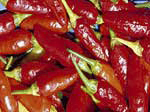|
Do It Yourself Pest Control
- Some people find it satisfying to make up their own pest control products.
Gardeners interested in creating their own pest control remedies are not
necessarily looking for cheap or easy options, but merely searching for low
toxic alternatives to chemical sprays. There is also something rewardingly
macabre about watching caterpillars that have been decimating your cabbages,
wriggling around in agony when covered in chilli spray you have made yourself.
Fruit
Fly Bait (Thanks to A & H Gugger - Mary Valley Orchards)
A cheap and very
effective method is a Biodynamic brew. In 20lt of water, mix in 3kg sugar, 50ml
vanilla essence and 400ml cloudy ammonia. Use a 2lt bottle, burn or jut 4 holes
in the middle, fill the mix up to ¼ (25%) full and hang around the boundaries of
your property.
Tree Pastes
Tree pastes are used as an aid to tree vigour and for pest and disease control.
Biodynamic gardeners routinely use tree pastes during winter. The original
formula proposed by biodynamics founder, Rudolf Steiner, was composed of:
4 parts cow manure (naturally aged, not processed products)
2 parts diatomaceous earth* or silica sand
3 parts fine clay* or bentonite*
My own experiments centre on insecticide grade diatomaceous earth as the primary
ingredient. I use pastes to prevent borer attack and control scale infestation
on roses and citrus. It should be noted that insecticide grade diatomaceous
earth is not the same as the heat treated and highly dangerous diatomaceous
earth used in swimming pool filters.
Recipe pdf (57Kb)
*Insecticide grade diatomaceous earth is available in domestic quantities from
City Chicks. Bentonite can be
purchased from most produce stores, but is usually only available in large bags.
Potter’s clay is available in small quantities from discount stores and craft
suppliers.
Black Spot Spray/Bicarb
Soda Spray
1 tablespoon of bicarbonate soda
4.5 litres of
water
1 tablespoon of homemade Oil
Spray concentrate (see below) or commercial oil spray (vegetable oil based)
Spray
weekly as a preventative treatment to minimise black spot and mildew.
Improve air circulation around plants. Avoid wetting the foliage and thin out
overcrowded growth. Remove any leaves affected by black spot as soon as they are
sighted.
Casuarina Tea
Casuarina
trees contain high levels of silica. Biodynamic gardeners make a spray made from
casuarina foliage for use against fungal diseases like anthracnose and other
mildews.
Simmer 60gm dried Casuarina needles in one litre of water for 20 minutes
using a stainless steel container.
Strain and dilute 1 part concentrate to 40
parts water.
Spray in the air around trees early in the morning.
For further
information go to
www.biodynamics.net.au
Garlic Spray
Three large cloves of crushed garlic
1 tablespoon of vegetable oil
One teaspoon of liquid soap
One litre of water
Combine the garlic and vegetable oil and leave to soak overnight. Strain and add
to the litre of water along with the liquid soap. Spray regularly. Garlic in
known for its antifungal and antibacterial properties, but it is its insect
repellent qualities that most gardeners admire.
Powdery Mildew Spray/Milk
Spray
Powdery mildew appears as grey or white powdery spots on the new foliage. It
causes puckering of the foliage and in severe infestations, a burnt appearance
and leaf fall. This disease occurs most frequently when night temperatures
drop and relative humidity remains high. Avoid the over-use of high nitrogen
fertilisers as these can tend to make leave growth that is soft and more
susceptible to disease.
1 part of milk
9 parts of water
Spray regularly over the
leaves, paying particular attention to soft new growth
Homemade Oil Spray
Mix 500ml of vegetable oil
½ cup of Sunlight dishwashing liquid or other pure liquid soap
Blend thoroughly and seal in a clean, clearly labelled jar. Store in a cool area
for later use.
Dilute one tablespoon of the concentrate into one litre of water before
spraying.
Oil based mixtures can be used
to suffocate mites, scale and other soft bodied insects. They help to repel leaf
miner moths and some gardeners even find them effective against grasshoppers.
Avoid using on plants with hairy leaves and during very hot weather.
Molasses Spray
Dissolve one tablespoon of molasses into a litre of warm water.
Add one teaspoon of Sunlight dish washing liquid or other pure liquid soap
Spray regularly over the leaves
of all plants attacked by caterpillars and other chewing pests. Caterpillars
would rather starve than eat leaves sprayed with this mixture. It has also been
used with success by some gardeners as a possum repellent and for the treatment
of soil affected by root knot nematodes by doubling the concentration of molasses.
 Chilli Spray Chilli Spray
Small hot chillies (40-50)
2 litres of water
5 grams of pure soap flakes dissolved in hot water or a few drops of liquid soap
Puree the chillies and one litre of water together in a blender. Strain the
mixture through a fine sieve and add the soap and the other litre of water.
Spray this mixture undiluted on to plants.
This spray is a favourite
with warm climate gardeners who have chillies in abundance almost year round. If
you do not have a chilli bush you can substitute chilli powder or paste. Chilli
spray is particularly effective against ants, aphids and other soft-bodied
insects.
- This mixture can look
attractive to children, so be sure to label correctly and store out of their reach. Wear gloves when
spraying and ensure that the mixture does not come in contact with your skin or
eyes.
(This
text contains an edited extract from my book, 'Organic Vegetable Gardening',
published by ABC Books). See
[Books]
|